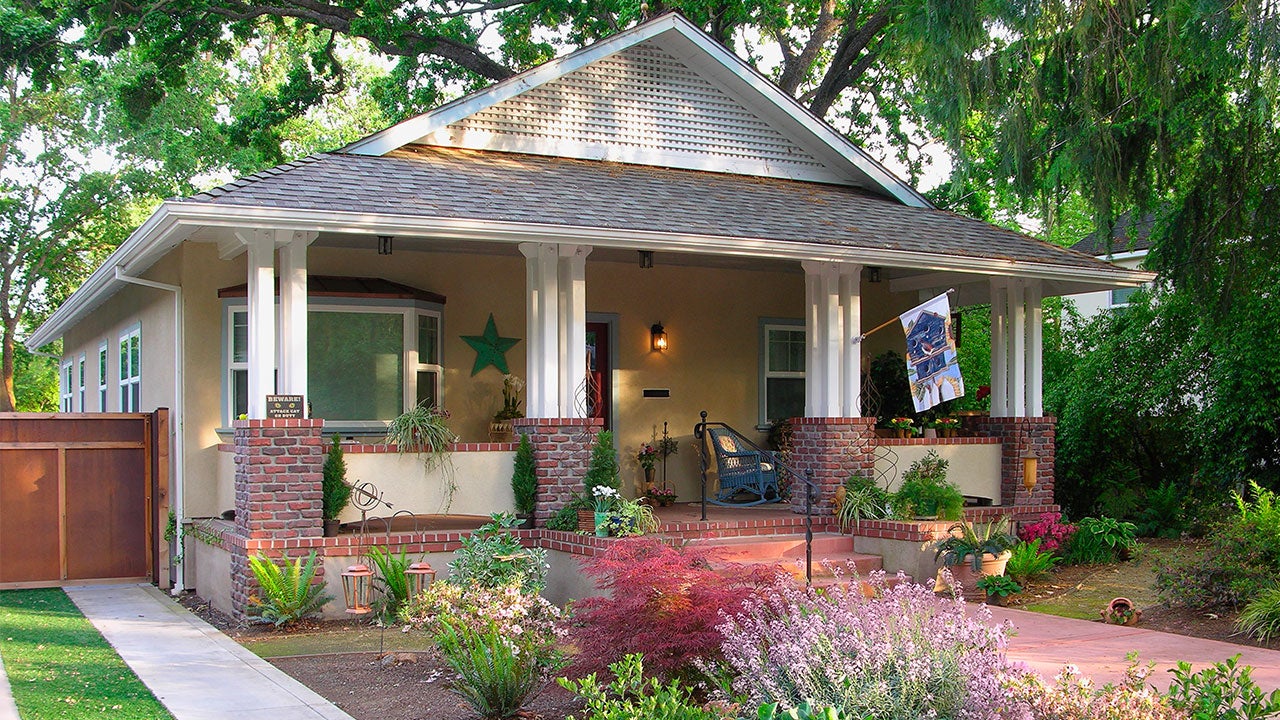What is a bridge loan and how does it work?

Key takeaways
- Bridge loans are short-term loans that help cover costs during transitional periods, most often if you must buy a new home before selling your old one.
- Like a mortgage, your home may serve as collateral for a bridge loan. Some bridge loans allow you to pledge other assets instead.
- Many lenders only offer bridge loans if you work with them to finance your next home purchase.
If you’re moving between homes — especially with little notice — a short-term bridge loan can help cover costs. For example, if you must buy a new home before selling your old one — and freeing up cash for a down payment — a bridge loan can come in handy. However, they do have risks. Here’s what you should know before getting one.
What is a bridge loan?
A bridge loan — also referred to as a gap loan or a swing loan — is a short-term loan that typically helps with financing when moving from one house to another. Bridge loans are often secured by your current home, but some allow for other types of assets.
You might use a bridge loan if you need a new home before your old one has sold, and you need extra cash for a down payment and the additional, monthly mortgage payment. Real estate investors who flip properties often rely on bridge loans, as well.
How does a bridge loan work?
Bridge loans vary widely in structure, cost and terms. If you qualify, you could borrow a relatively large sum, anywhere from tens of thousands of dollars to more than $1 million. Some carry monthly or interest-only payments, while others require either upfront or balloon payments.
A bridge loan might involve cashing out equity from your current home and putting that toward a down payment on a new property — or, simply taking out a bigger mortgage for the new property. Another type of bridge loan uses both homes as collateral.
While bridge loans vary, most share a few general characteristics:
- They usually run for six- to 12-month terms and are secured by the borrower’s old home.
- Lenders rarely extend a bridge loan unless the borrower agrees to also finance the new home with that lender.
- Rates can range anywhere from the prime rate to the prime rate plus 2 percentage points.
Say your current home is worth $300,000 and you have a $50,000 balance on your mortgage. If you got a bridge loan for $70,000, you could use $50,000 to pay off your mortgage and another $2,000 for the loan’s closing costs. Then you’d have $18,000 for your next purchase.
Bridge loan vs. traditional loan
The primary difference between a bridge loan and a traditional loan is the timeline for repayment. The term on a bridge loan typically lasts six to 12 months, while the term on a mortgage can be up to 30 years. In addition, lenders fund bridge loans more quickly than traditional mortgages — sometimes in as little as two weeks.
Bridge loan requirements
- Credit score: Because bridge loan lenders have much more underwriting flexibility, you might be able to get a bridge loan with a credit score in the 500s.
- Debt-to-income (DTI) ratio: Some bridge loan lenders allow a DTI ratio as high as 50 percent.
- Equity: If you’re taking on a traditional bridge loan, many lenders require at least 15 to 20 percent equity in your current home.
Pros and cons of bridge loans
Pros of bridge loans
- Cash in hand quickly: A bridge loan is good for time-sensitive transactions. Some lenders fund in as few as two weeks.
- Payment flexibility: You can defer payments until your current home sells or make interest-only payments.
- No contingency needed: A bridge loan may let you avoid making the offer on your new home contingent on the sale of your old one, which could make it more competitive.
Cons of bridge loans
- Equity requirements: Many lenders require at least 20 percent equity in the current home. This can be a barrier to entry for some.
- Financing requirements: The lender might only extend a bridge loan if you agree to use the company for your new home mortgage.
- Higher rates: Bridge loans usually have higher interest rates and APRs compared to traditional mortgages.
- Limited borrower protections: Bridge loans rarely come with protections for the loan holder if the sale of the old home falls through. The lender could foreclose on the old property if the bridge loan comes due and the borrower can’t pay.
How to apply for a bridge loan
The process of applying for a bridge loan is similar to applying for a regular mortgage:
- Determine your home equity level. This is the difference between the value of your current home and the outstanding balance of your current mortgage. Most lenders only allow you to borrow up to 80 percent or 85 percent of your equity.
- Shop for a lender. Many mortgage lenders don’t offer bridge loans, but some that do include CoreVest, Guild Mortgage and Knock.
- Understand your options. When you find a lender you like, contact a loan officer to learn about requirements and how their bridge loan program works — remember, not all lenders structure bridge loans the same way.
Bridge loan alternatives
If you’re concerned about taking out a bridge loan, consider one of these other options:
- Home equity loan: If you know exactly how much you need to borrow for a down payment on your new home, a home equity loan might be a solution. You’ll receive a lump sum, and you may repay it over as many as 20 or 30 years. Home equity loans also typically have more favorable interest rates than bridge loans.
- HELOC: A home equity line of credit (HELOC) is similar to a home equity loan in that it draws on the equity of your current home, but it functions like a credit card. You can take out money as needed, up to a certain limit. You’re only charged interest if you access the line of credit. However, you may be ineligible for a HELOC on your current home if it’s for sale.
- 80/10/10 loan: With an 80/10/10 loan, also known as a piggyback loan, you put down 10 percent and receive two mortgages: the first for 80 percent of the purchase price and the second for 10 percent. You can use the smaller mortgage as a bridge loan alternative and then pay off the second mortgage when your current home sells.






